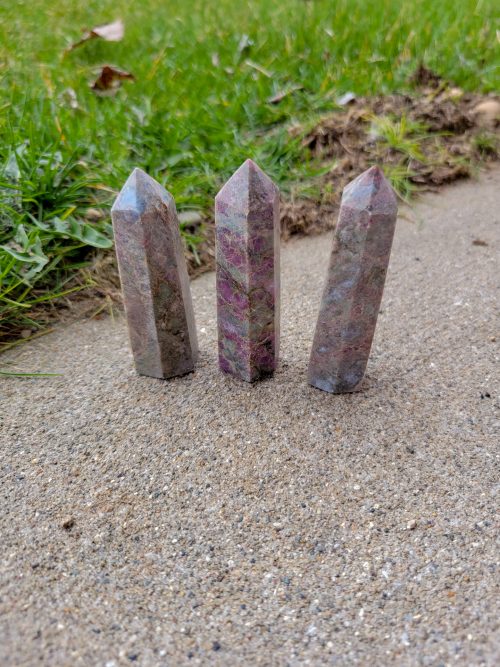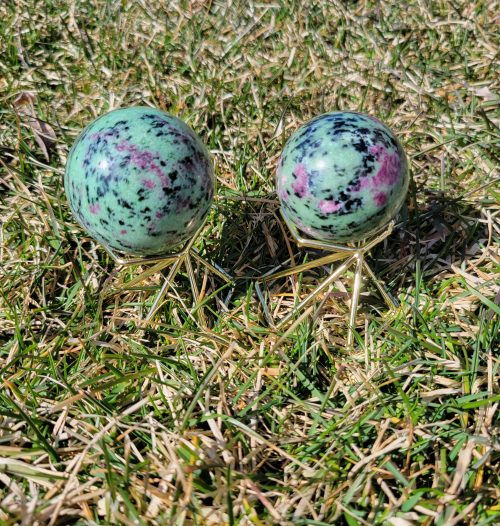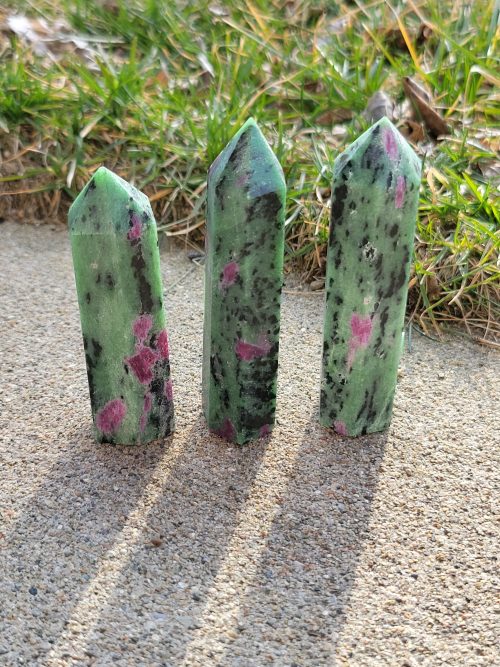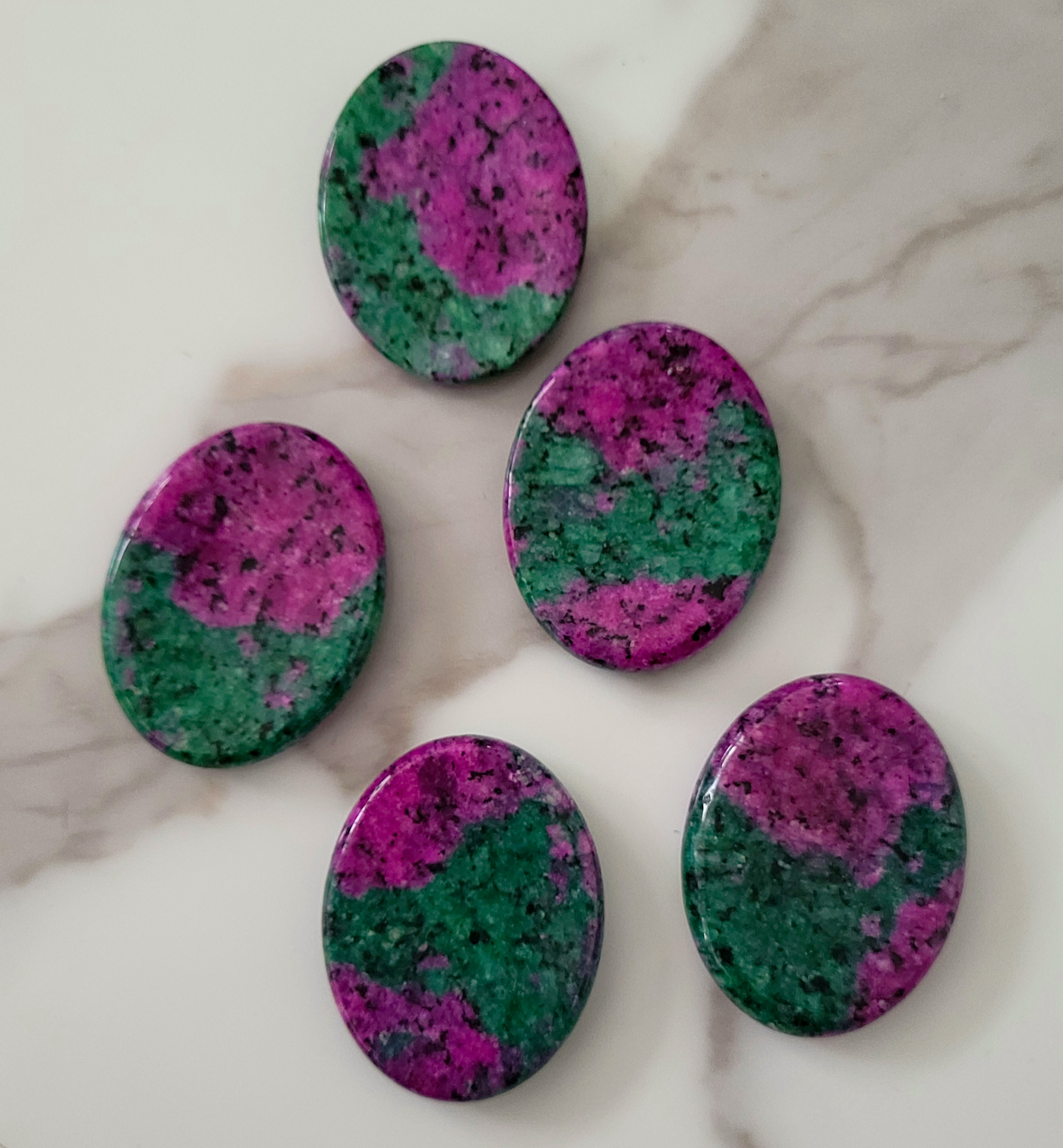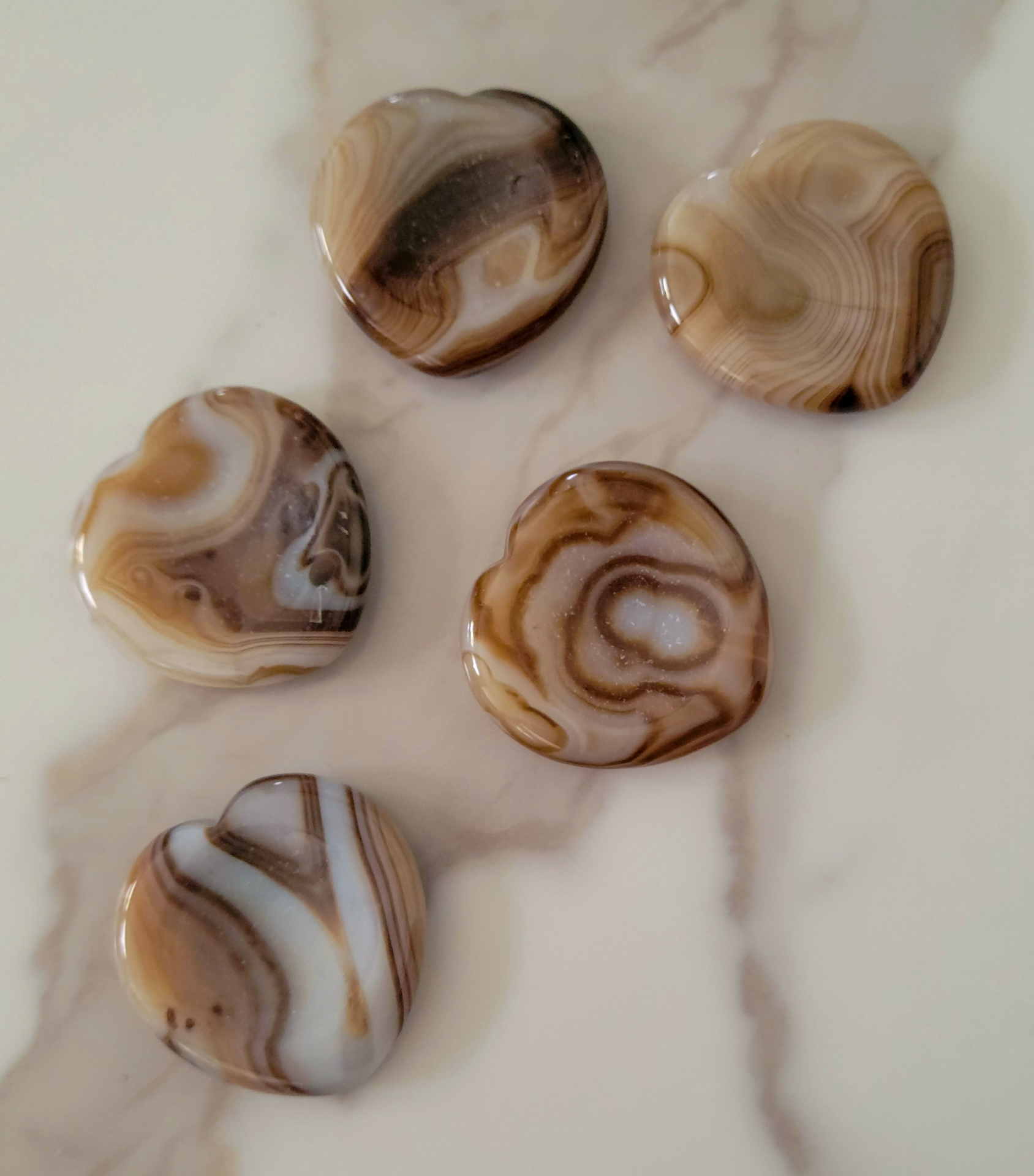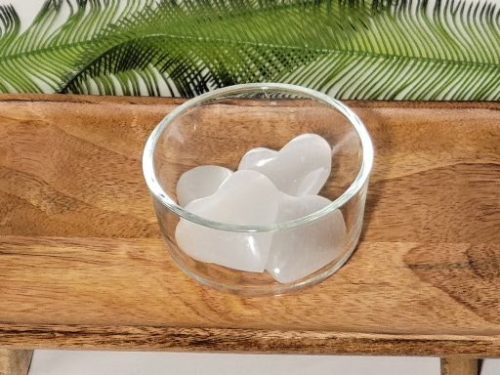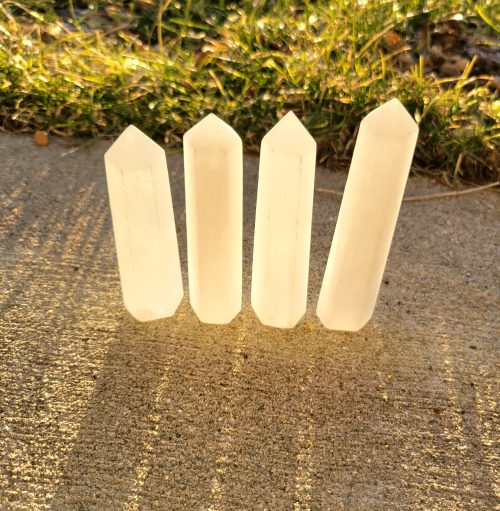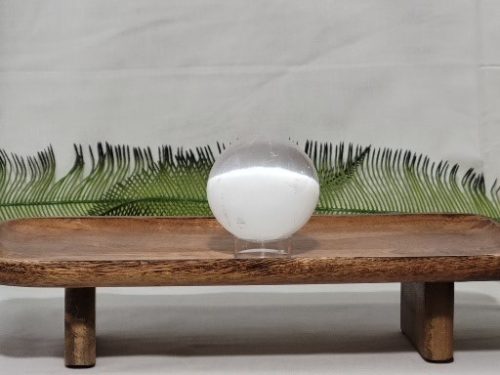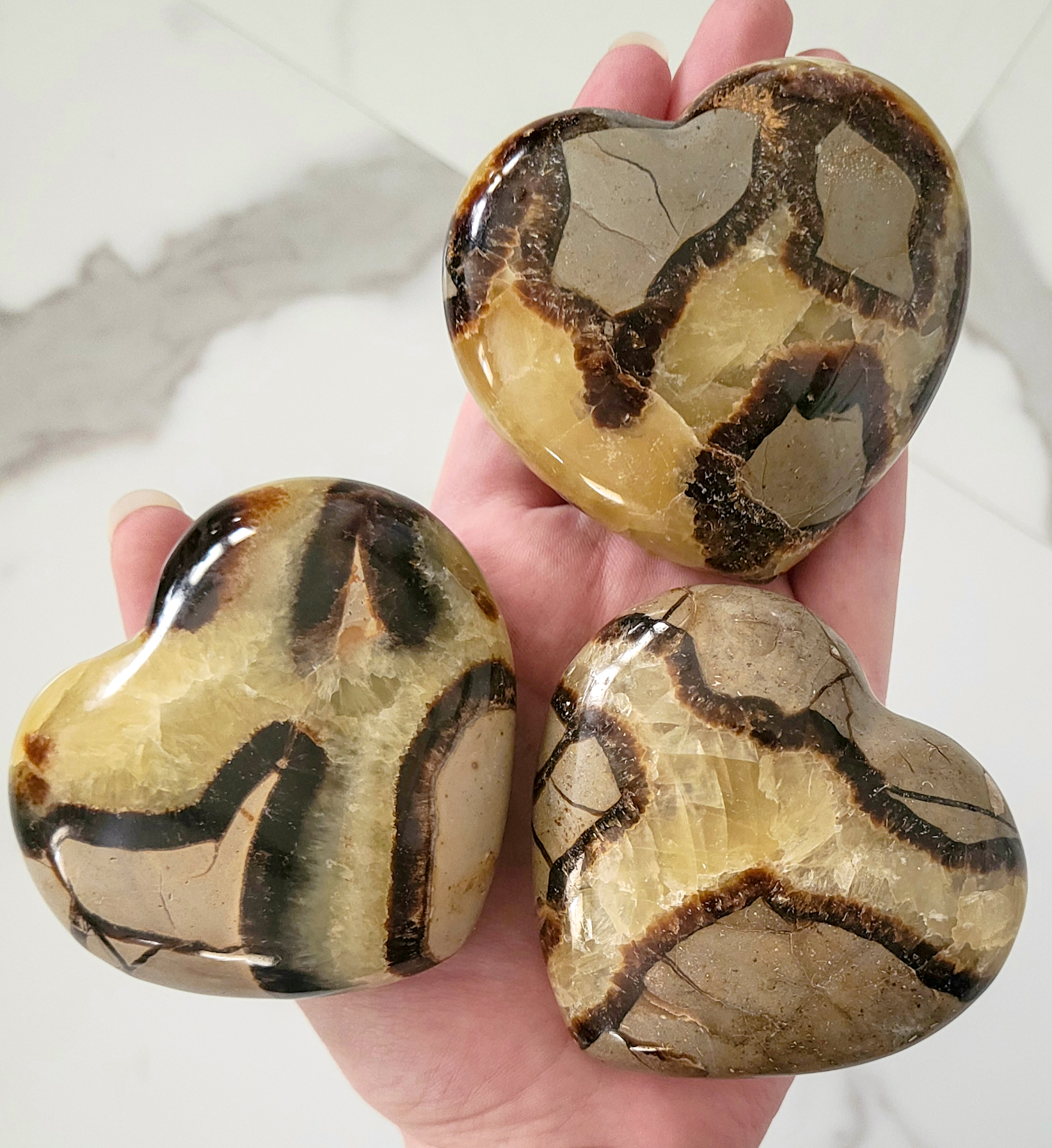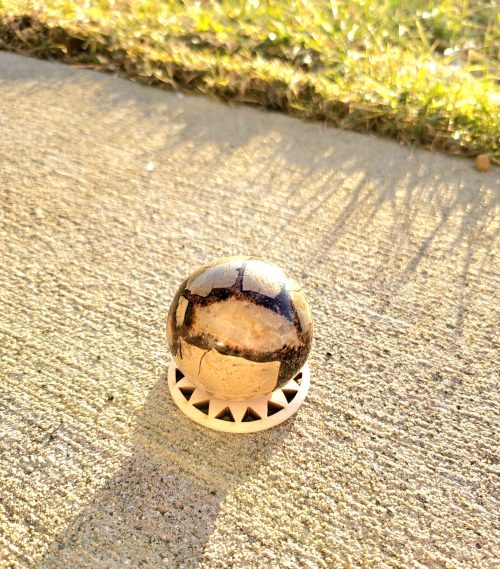-
45mm Zoisite is a mineral that forms during the metamorphism and hydrothermal alteration of igneous, metamorphic, and sedimentary rocks. Anyolite is a very colorful rock composed mainly of zoisite. It is also known as "ruby in zoisite" because it is composed of green zoisite with bright red ruby. Rubies are corundum gems that are predominately red. The color can range from orangish red to purplish red. The most desirable color range is a pure vibrant red to a slightly purplish red. Ruby in Zoisite was discovered and is still only found in Tanzania ***Due to natural variations in stones, appearance will vary***
-
7.5cm - 8.5cm Tall Zoisite is a mineral that forms during the metamorphism and hydrothermal alteration of igneous, metamorphic, and sedimentary rocks. Anyolite is a very colorful rock composed mainly of zoisite. It is also known as "ruby in zoisite" because it is composed of green zoisite with bright red ruby. Rubies are corundum gems that are predominately red. The color can range from orangish red to purplish red. The most desirable color range is a pure vibrant red to a slightly purplish red. Ruby in Zoisite was discovered and is still only found in Tanzania ***Due to natural variations in stones, appearance will vary***
-
4 x 1 x 5cm Zoisite is a mineral that forms during the metamorphism and hydrothermal alteration of igneous, metamorphic, and sedimentary rocks. Anyolite is a very colorful rock composed mainly of zoisite. It is also known as "ruby in zoisite" because it is composed of green zoisite with bright red ruby. Rubies are corundum gems that are predominately red. The color can range from orangish red to purplish red. The most desirable color range is a pure vibrant red to a slightly purplish red. Ruby in Zoisite was discovered and is still only found in Tanzania ***Due to natural variations in stones, appearance will vary***
-
4 x 1 x 4cm Sardonyx combines alternating layers of sard and onyx to create a reddish zebra-striped gemstone with white bands. Onyx is a banded variety of the oxide mineral chalcedony. Onyx and Agate are similar in that they are both varieties of layered chalcedony. The difference between the two is that agate has curved banding and onyx has parallel banding. The colors of the banding range from virtually every color possibility.Onyx is mainly found in Brazil, India, Madagascar, Mexico, Peru, and USA. ***Due to natural variations in stones, appearance will vary***
-
6cm x 5cm x 2cm Selenite-also known as Satin Spar- is a chemical sedimentary mineral. Unlike carbonate rocks and siliceous rocks, this mineral comes from seawater that evaporates and leaves the chemical found in selenite behind. This beautiful mineral has a pearly, satin-like appearance and is a very soft mineral. These minerals can be found in Mexico, Brazil, Japan, and many other countries! ***Due to natural variations in stones, the appearance will vary***
-
9cm - 10.5cm Selenite-also known as Satin Spar- is a chemical sedimentary mineral. Unlike carbonate rocks and siliceous rocks, this mineral comes from seawater that evaporates and leaves the chemical found in selenite behind. This beautiful mineral has a pearly, satin-like appearance and is a very soft mineral. These minerals can be found in Mexico, Brazil, Japan, and many other countries! ***Due to natural variations in stones, the appearance will vary***
-
50mm - 60mm Selenite-also known as Satin Spar- is a chemical sedimentary mineral. Unlike carbonate rocks and siliceous rocks, this mineral comes from seawater that evaporates and leaves the chemical found in selenite behind. This beautiful mineral has a pearly, satin-like appearance and is a very soft mineral. These minerals can be found in Mexico, Brazil, Japan, and many other countries! ***Due to natural variations in stones, the appearance will vary***
-
8 x 2 x 8cm Septarian concretions are concretions containing cavities or cracks, called septaria. The septaria are the calcite (yellow) filled cracks at the center of the rock, indicating where the center of the concretions have shrunk, possibly during dehydration during its transformative journey over a long period of time. Septarian can be found mostly in the Gulf of Mexico and Madagascar. ***Due to natural variations in stones, appearance will vary***
-
3cm - 4cm Wide Septarian concretions are concretions containing cavities or cracks, called septaria. The septaria are the calcite (yellow) filled cracks at the center of the rock, indicating where the center of the concretions have shrunk, possibly during dehydration during its transformative journey over a long period of time. Septarian can be found mostly in the Gulf of Mexico and Madagascar. ***Due to natural variations in stones, appearance will vary***
-
55mm Septarian concretions are concretions containing cavities or cracks, called septaria. The septaria are the calcite (yellow) filled cracks at the center of the rock, indicating where the center of the concretions have shrunk, possibly during dehydration during its transformative journey over a long period of time. Septarian can be found mostly in the Gulf of Mexico and Madagascar. ***Due to natural variations in stones, appearance will vary***
-
45mm Septarian concretions are concretions containing cavities or cracks, called septaria. The septaria are the calcite (yellow) filled cracks at the center of the rock, indicating where the center of the concretions have shrunk, possibly during dehydration during its transformative journey over a long period of time. Septarian can be found mostly in the Gulf of Mexico and Madagascar. ***Due to natural variations in stones, appearance will vary***

